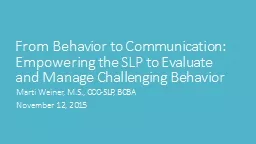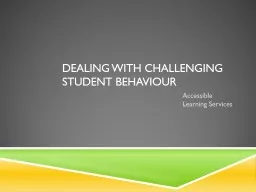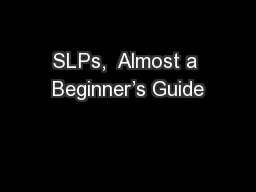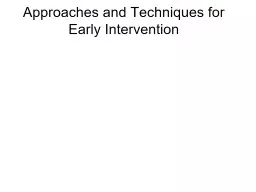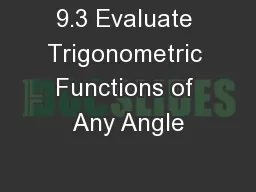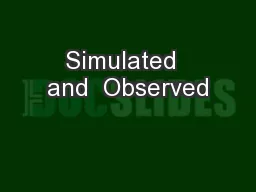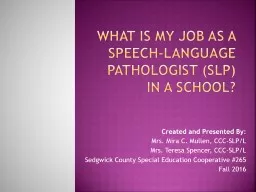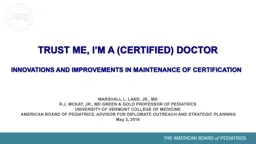PPT-From Behavior to Communication: Empowering the SLP to Evaluate and Manage Challenging
Author : test | Published Date : 2018-03-22
Marti Weiner MS CCCSLP BCBA November 12 2015 My name is Marti Weiner I am a licensed speech language pathologist in Kansas and Missouri hold a Certificate of Clinical
Presentation Embed Code
Download Presentation
Download Presentation The PPT/PDF document "From Behavior to Communication: Empoweri..." is the property of its rightful owner. Permission is granted to download and print the materials on this website for personal, non-commercial use only, and to display it on your personal computer provided you do not modify the materials and that you retain all copyright notices contained in the materials. By downloading content from our website, you accept the terms of this agreement.
From Behavior to Communication: Empowering the SLP to Evaluate and Manage Challenging: Transcript
Download Rules Of Document
"From Behavior to Communication: Empowering the SLP to Evaluate and Manage Challenging"The content belongs to its owner. You may download and print it for personal use, without modification, and keep all copyright notices. By downloading, you agree to these terms.
Related Documents

